Advances in adaptive, intelligent life-inspired materials
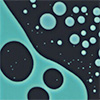 Researchers explore innovative approaches for developing life-inspired materials with advanced properties such as adaptivity, self-organization, and embodied intelligence.
Researchers explore innovative approaches for developing life-inspired materials with advanced properties such as adaptivity, self-organization, and embodied intelligence.

 Subscribe to our Nanotechnology Spotlight feed
Subscribe to our Nanotechnology Spotlight feed
 Researchers explore innovative approaches for developing life-inspired materials with advanced properties such as adaptivity, self-organization, and embodied intelligence.
Researchers explore innovative approaches for developing life-inspired materials with advanced properties such as adaptivity, self-organization, and embodied intelligence.
 Discover how scientists use living organisms for sustainable materials like self-healing concrete and eco-friendly plastics, paving the way for green manufacturing.
Discover how scientists use living organisms for sustainable materials like self-healing concrete and eco-friendly plastics, paving the way for green manufacturing.
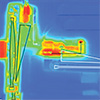 Researchers have developed innovative mechanical transistors that combine temperature-responsive materials and switchable structures, enabling complex logic operations and memory storage without electricity, opening up new possibilities for computing and environmental interaction.
Researchers have developed innovative mechanical transistors that combine temperature-responsive materials and switchable structures, enabling complex logic operations and memory storage without electricity, opening up new possibilities for computing and environmental interaction.
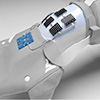 Researchers develop an intelligent iontronic wood device that seamlessly integrates tactile sensing into woodwork, enabling novel human-wood interactions.
Researchers develop an intelligent iontronic wood device that seamlessly integrates tactile sensing into woodwork, enabling novel human-wood interactions.
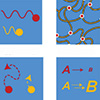 Novel computational model captures the interplay of light, heat, diffusion and reaction kinetics to predict material properties in photopolymerization with unprecedented accuracy.
Novel computational model captures the interplay of light, heat, diffusion and reaction kinetics to predict material properties in photopolymerization with unprecedented accuracy.
 Researchers have developed transparent wood with tunable, long-lived room-temperature phosphorescence, enabling applications like smart windows and lighting.
Researchers have developed transparent wood with tunable, long-lived room-temperature phosphorescence, enabling applications like smart windows and lighting.
 Researchers unveiled a technique using electric fields to induce "explosive emulsification" propelling liquid droplets via nanoparticle interface effects, enabling programmable soft microactuators.
Researchers unveiled a technique using electric fields to induce "explosive emulsification" propelling liquid droplets via nanoparticle interface effects, enabling programmable soft microactuators.
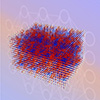 Explore how machine learning impacts nanoscience and nanotechnology, leading to breakthroughs in material science, diagnostics, and energy solutions.
Explore how machine learning impacts nanoscience and nanotechnology, leading to breakthroughs in material science, diagnostics, and energy solutions.